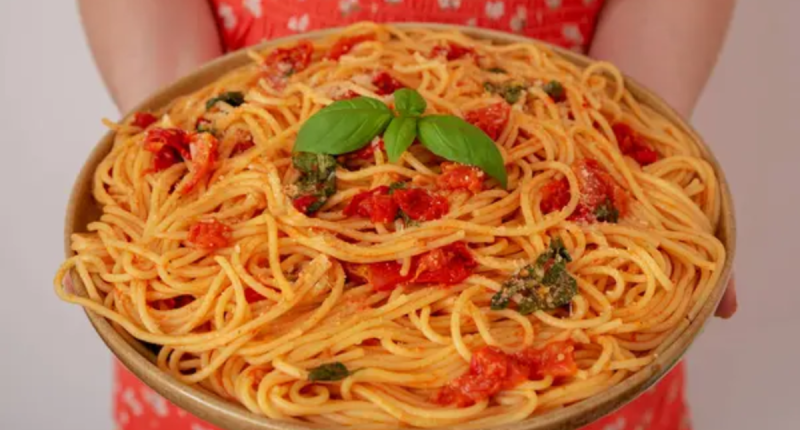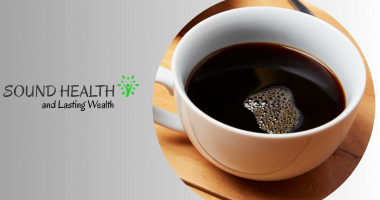Yes, spaghetti can be a healthy food to eat for most people, but there are a few exceptions such as;
People with celiac disease or gluten intolerance should avoid spaghetti, as it contains gluten. Gluten is a protein found in wheat, rye, and barley that can cause inflammation and damage to the small intestine in people with celiac disease or gluten intolerance.
People with diabetes should also be mindful of their spaghetti intake, as it is a carbohydrate-rich food. Carbohydrates can raise blood sugar levels, so people with diabetes need to be careful to balance their carbohydrate intake with other foods and activities.
It is estimated that over 14 million tons of spaghetti are consumed each year. Spaghetti is especially popular in Italy, the United States, and other Western countries. It can be served with a variety of sauces, including tomato sauce, Alfredo sauce, pesto sauce, and meat sauce. Spaghetti can also be used to make a variety of dishes, such as lasagna, spaghetti carbonara, and spaghetti meatballs.
The nutritional composition of spaghetti varies depending on whether it is made from white or whole-wheat flour. Here is a general overview of the nutritional composition of a 1-cup serving of cooked spaghetti Source:
White Spaghetti
- Calories: 221
- Protein: 8 grams
- Fat: 1 gram
- Carbohydrates: 43 grams
- Fiber: 2.5 grams
- Iron: 1.9 milligrams
- Magnesium: 25.2 milligrams
- Phosphorus: 81.2 milligrams
- Potassium: 63 milligrams
Whole-Wheat Spaghetti
- Calories: 233
- Protein: 9.3 grams
- Fat: 1.9 grams
- Carbohydrates: 43 grams
- Fiber: 4.6 grams
- Iron: 2.2 milligrams
- Magnesium: 31.2 milligrams
- Phosphorus: 89.2 milligrams
- Potassium: 74 milligrams
As you can see, whole-wheat spaghetti is slightly higher in calories, protein, fat, and fiber than white spaghetti. However, it is also a good source of additional vitamins and minerals, such as manganese, selenium, and copper.
Overall, spaghetti is a good source of complex carbohydrates, protein, and fiber. It is also a good source of several vitamins and minerals. However, it is important to choose whole-wheat spaghetti over white spaghetti and to use a healthy sauce to make the most of the nutritional benefits of spaghetti.
Spaghetti Facts
| Fact | Description |
|---|---|
| Good source of complex carbohydrates | Complex carbohydrates break down slowly in the body, providing sustained energy. |
| Good source of fiber | Fiber helps to regulate digestion, keep you feeling full, and lower cholesterol levels. |
| Good source of protein | Protein is essential for building and repairing muscle tissue. |
| Low-fat food | Spaghetti is a good source of energy without a lot of fat. |
| Versatile food | Spaghetti can be paired with a variety of sauces and proteins to make a healthy and delicious meal. |
| Reduced risk of heart disease | Spaghetti’s high fiber content and low-fat content make it a good choice for heart health. |
| Regulated blood sugar levels | Spaghetti’s low glycemic index means that it doesn’t cause a rapid spike in blood sugar levels. This makes it a good choice for people with diabetes or prediabetes. |
| Improved gut health | Spaghetti’s fiber content is essential for a healthy gut microbiome. The gut microbiome plays an important role in digestion, immunity, and overall health. |
Health Benefits of Spaghetti
High content of complex carbohydrates. These carbohydrates are the body’s primary source of energy and are essential for maintaining optimal physical and mental performance. Unlike simple carbohydrates found in sugary foods, complex carbohydrates in spaghetti provide a steady release of energy, preventing blood sugar spikes and crashes.
Fiber content. Spaghetti made from whole wheat or whole grain varieties is a good source of dietary fiber. Fiber is crucial for a healthy digestive system, as it helps maintain regular bowel movements and prevents constipation. Additionally, dietary fiber has been linked to lower cholesterol levels and a reduced risk of heart disease.
Good source of protein. Protein is necessary for the growth and repair of body tissues and plays a crucial role in muscle development. While spaghetti alone may not provide all the essential amino acids found in animal proteins, it can be paired with lean meat, eggs, or legumes to create a complete protein meal.
Essential vitamins and minerals. It is particularly rich in B vitamins, including thiamin, riboflavin, niacin, and folate. These vitamins are essential for maintaining energy levels, supporting brain function, and promoting healthy cell division. Additionally, spaghetti provides minerals such as iron, magnesium, and selenium, which are important for various bodily functions, including oxygen transport, bone health, and immune system support.
For cardiovascular health, spaghetti can be a beneficial addition to a heart-healthy diet. Whole wheat or whole grain spaghetti is a good source of dietary fiber, which has been shown to lower the risk of heart disease. Additionally, wheat-based pasta contains compounds called polyphenols, which have antioxidant and anti-inflammatory properties. These compounds can help protect against cardiovascular damage and reduce the risk of developing chronic diseases.
Tips for Healthy Spaghetti Consumption
- Choose whole-wheat spaghetti over white spaghetti. Whole-wheat spaghetti is a good source of fiber and nutrients, while white spaghetti is a refined carbohydrate that is low in nutrients.
- Use a healthy sauce. Avoid using heavy cream or cheese sauces, as these are high in calories and saturated fat. Instead, opt for a tomato-based sauce or a vegetable-based sauce. You can also make your own sauce using fresh ingredients.
- Add lean protein. Adding a lean protein source to your spaghetti dish will make it more satisfying and nutritious. Good options include chicken, fish, beans, and tofu.
- Load up on vegetables. Adding vegetables to your spaghetti dish is a great way to increase the nutritional value of your meal. Good options include broccoli, spinach, mushrooms, and tomatoes.
- Limit your portion size. Spaghetti is a calorie-dense food, so it is important to limit your portion size. A good serving size is 1 cup of cooked spaghetti.
- Avoid overcooking your spaghetti. Overcooked spaghetti is mushy and has a high glycemic index, which means it can cause a rapid spike in blood sugar levels.
- Let your spaghetti cool before adding sauce. This will help to prevent the sauce from absorbing the spaghetti and making it mushy.
- Use a strainer to drain your spaghetti. This will help to remove excess water and prevent the spaghetti from becoming soggy.
- Serve your spaghetti with a side salad or roasted vegetables. This will help to make your meal more balanced and nutritious.
Some Easy Healthy Recipes To Try
Whole-wheat spaghetti with tomato sauce and vegetables
Ingredients:
- 1 pound whole-wheat spaghetti
- 1 (28-ounce) can crushed tomatoes
- 1 onion, chopped
- 2 cloves garlic, minced
- 1 green bell pepper, chopped
- 1 zucchini, chopped
- 1/2 teaspoon dried oregano
- 1/4 teaspoon salt
- 1/4 teaspoon black pepper
- Parmesan cheese, grated, for serving
Instructions:
- Cook the spaghetti according to package directions.
- While the spaghetti is cooking, heat a large skillet over medium heat. Add the onion and garlic and cook until softened, about 5 minutes.
- Add the bell pepper, zucchini, oregano, salt, and pepper to the skillet. Cook until the vegetables are tender, about 10 minutes.
- Add the crushed tomatoes to the skillet and bring to a simmer. Reduce heat to low and simmer for 15 minutes.
- Drain the spaghetti and add it to the skillet with the tomato sauce. Toss to combine.
- Serve immediately with grated Parmesan cheese.
Whole-wheat spaghetti with pesto and grilled chicken
Ingredients:
- 1 pound whole-wheat spaghetti
- 1 cup pesto sauce
- 1 pound boneless, skinless chicken breasts, grilled and sliced
- Parmesan cheese, grated, for serving
Instructions:
- Cook the spaghetti according to package directions.
- While the spaghetti is cooking, grill the chicken breasts.
- Drain the spaghetti and add it to a large bowl.
- Add the pesto sauce and grilled chicken to the bowl with the spaghetti. Toss to combine.
- Serve immediately with grated Parmesan cheese.
Whole-wheat spaghetti with shrimp scampi
Ingredients:
- 1 pound whole-wheat spaghetti
- 1 pound shrimp, peeled and deveined
- 1/4 cup olive oil
- 1/4 cup white wine
- 2 tablespoons lemon juice
- 1/4 teaspoon garlic powder
- 1/4 teaspoon salt
- 1/4 teaspoon black pepper
- 1/4 cup chopped fresh parsley
Instructions:
- Cook the spaghetti according to package directions.
- While the spaghetti is cooking, heat a large skillet over medium heat. Add the olive oil and shrimp to the skillet and cook until the shrimp is pink and cooked through, about 5 minutes.
- Add the white wine, lemon juice, garlic powder, salt, and pepper to the skillet. Bring to a boil and then reduce heat to low and simmer for 2 minutes.
- Drain the spaghetti and add it to the skillet with the shrimp sauce. Toss to combine.
- Serve immediately with chopped fresh parsley.
These are just a few easy healthy recipes using spaghetti. You can also get creative and make your own recipes using different sauces, vegetables, and proteins.
Takeaway…
While spaghetti is a versatile and delicious dish, it is essential to note that portion control and food pairings are crucial to reap its health benefits. A serving of spaghetti should be about one cup cooked and should be accompanied by a variety of vegetables, lean proteins, and healthy fats. Avoid heavy cream-based sauces and opt for tomato-based or olive oil-based sauces instead.








